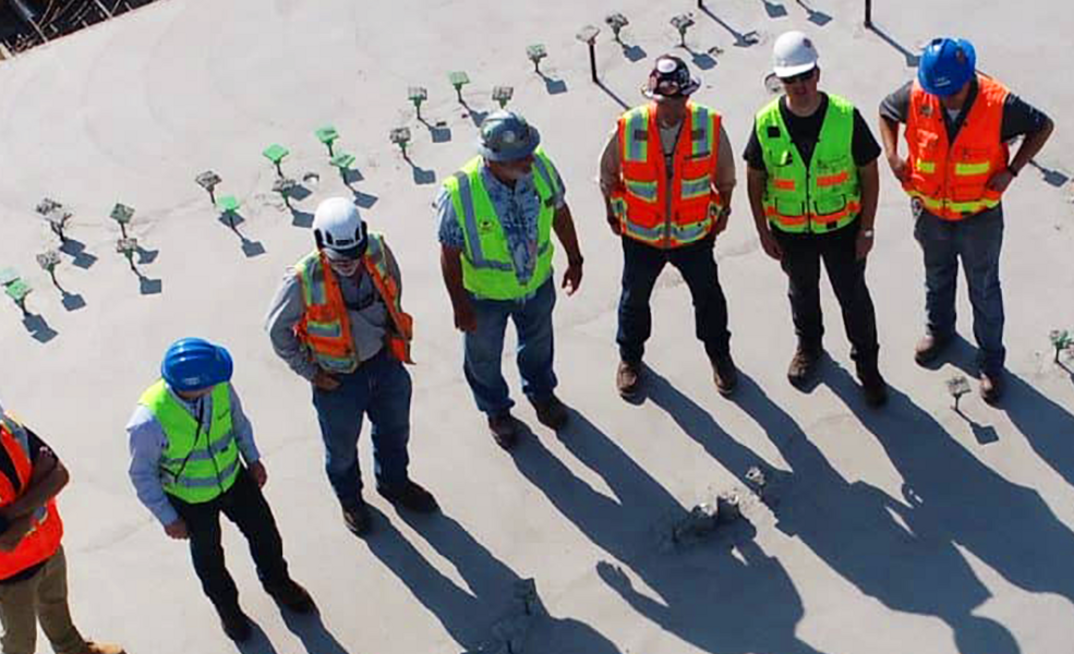I believe that I'm in control of my wellbeing, no-one else is. If something ‘good' happens to me, as with something ‘bad' (touch wood), I rely on my ability to get through the situation, not anyone else's.
You might think that's a common belief. However, people in an organizational setting often believe the complete opposite. So, one of the biggest challenges to safety management is getting employees to take responsibility for their personal safety, and to always act to reduce the risks of their operation.
Year after year, Health and Safety departments try to make their staff aware and responsible, by recording unsafe acts - even making safety a condition of employment. However, as far as I have seen, the results remain the same, or improvements are unsustainable.
But, why does this happen? Why do people keep committing unsafe acts? Why can we only change the behavior of people when we are observing them? Why do people always look for someone to blame when they are injured?
For more than 25 years, we have been told that, to create an injury-free environment, it is necessary to educate staff about the risks in the workplace, and for staff to report any unsafe acts through tools such as Behavior Based Safety observations, in order to achieve a culture where everyone ‘takes care of each other'.
This ‘interdependent' culture where we ‘take care of each other' creates confusion amongst staff because they are made to believe that ‘Safety is the responsibility of everyone'. Yet this rather ambiguous and complex concept can easily be misinterpreted. When something is everyone's, it tends to be no-one's, and unfortunately this has happened with safety.
This concept is one of the biggest reasons people don't take responsibility for their own safety (including their own life). When you get injured, you always look for excuses and seek to blame someone else for what happened.
For example, an operator disables a safeguard in order to put their hand into a machine, thereby saving production time. You can imagine, if the operator gets injured, they'll magically become an expert in proportioning blame for what happened, saying things like:
- "Nobody told me that I could get injured"
- "The supervisor assigned the task to me"
- "I've always done it that way and nothing has ever happened to me before"
- "The company doesn't invest in the facilities"
- "Nobody trained me"
- "Leadership is not committed" and so forth.
I imagine many other reasons come to mind when you read these examples.
When ‘safety is everyone's responsibility' you're allowed to say all of this and more. ‘Long live the interdependent culture!' The interdependent culture then, is confused with the dependent culture.
This confusion has produced staff who are dependent on the instructions of their supervisors and leadership in order to work in a safe way; even saying that safety is the responsibility of line management.
So, if safety isn't everyone's responsibility, and it isn't line management's, whose is it? I am convinced that if you really want to have an organization free from incidents, then it is critical that safety is the responsibility of each person. It is necessary to hand over the responsibility of ‘safety' to every individual in the organization, and to ascertain that ‘responsibility for safety' belongs to all of us, because of the sum of each individual.
How can I do it? Here are three simple steps you can take to start this transformational process:
It's essential to stop talking about ‘others' and start using the first person ‘I', to develop the belief that ‘safety is my responsibility'. It's important to emphasize that with this belief I am not talking about each person being responsible for their own safety, but rather that every individual is responsible for ‘safety' and maintaining a risk-free environment. If we only manage to make each person worry about themselves and to keep their work area free of risks, we will have taken a big step that will surely lead us to a truly sustainable change.
- Start talking to staff, understand why they are exposed to risk and get to the bottom of their behavior; I give you a clue, it has to do with beliefs. If in a risk situation I think ‘nothing will happen to me', I will probably expose myself to risk. This belief is reflected when we do an incident investigation; the main human factor is defined as ‘Over Confidence.' Ask yourself, are you overly confident?
- Instead of looking for someone to blame and pinning it on the first person you come across; ask yourself and invite others to ask themselves: ‘What could I have done?' This is an easy way to find different solutions.
In conclusion and quoting an article that adds a lot to this topic:
Responsibility for your life is your own, it doesn't belong to any others or external forces. If you assume responsibility for your life, everything usually goes much better. Firstly, because you will strive to make things go well, and therefore you will be taking control. Secondly, because you will avoid giving that control to a third party.
However, that is precisely what many of the people I know often do: they give responsibility and control of their lives to others. In doing so, we remain in the hands of others. We went from being protagonists to observers, and even victims. That victimization becomes the perfect excuse to fall into conformism and complacency.
It's not easy to go against one of the theories that have been sold to us so much, but it's time to begin to challenge them and define which ones are really going to help us obtain the results we hope for; and generate a culture where safety is no longer the responsibility of everyone, instead becoming ‘Safety is My Responsibility' and Zero Incidents ceases to be a goal, instead becoming a lifestyle.
Interested in learning more about Safety Cultural?
Join Foundamentality and IsoMetrix and for a live webinar on cultural and digital transformation in relation to workplace safety. We'll share how to inspire the people in your business into adopting an agile and digital safety culture. Webinar in Spanish.
Webinar: People + Technology = Transformation in Safety Cultural
Language: Spanish
Date: Weds 3 April 2019
Time: 10:00 CST / 12:00 EST / 17:00 BST
This is the first in a series of three webinars co-hosted by Foundamentality and IsoMetrix. By combining Foundamentality's expertise in organizational culture, with the world leading technology from IsoMetrix, your business can transform its safety culture and performance.
Find out more about the IsoMetrix Environmental, Health & Safety (EHS) solution
This article has been adapted from the original in Spanish.
About the author, Sergio Seanez Castellanos
Partner and Managing Director of Foundamentality, Sergio has more than 15 years' experience in Culture transformation. Sergio worked with global clients in 30 different countries (Asia, Europe, and America) for over a decade at a global safety consulting company before launching the pioneering management consultancy. Fluent in English, Portuguese as well as his native Spanish, Sergio now leads his 20 strong team to Inspire Cultural Transformation with large companies around the world.
ABOUT THIS COMPANY
IsoMetrix
IsoMetrix is a leading supplier of integrated software for governance, risk, and compliance.
HEAD OFFICE:
- Johannesburg, South Africa, Block 7, Fourways Office Park, Roos Street, Fourways, 2191
- Phone: +27 11 465 6944
- Web: www.isometrix.com
- Email: info@isometrix.com


























